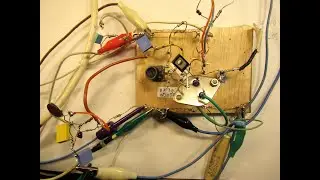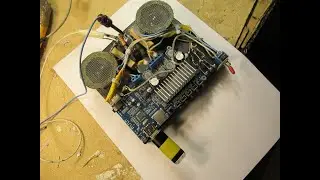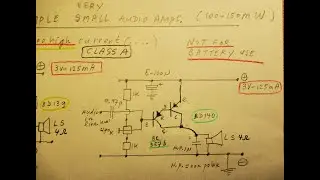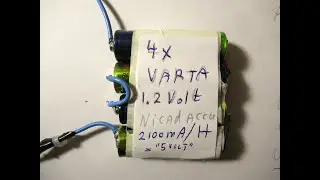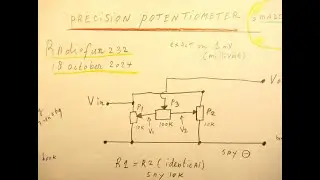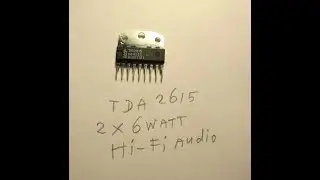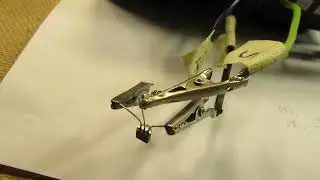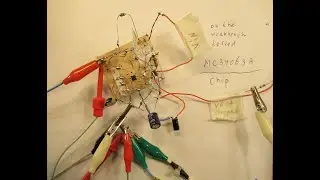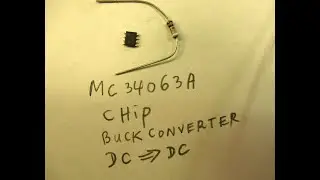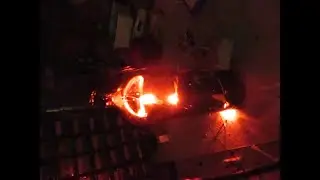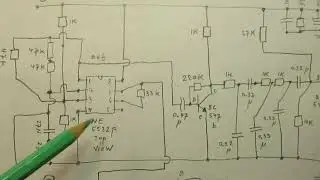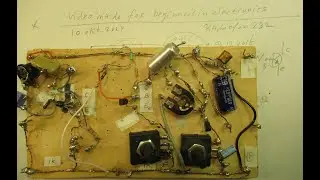Making a very simple oscilloscope Part 2: setup and shielding the tube against ext. E.M. influences
Making a very simple oscilloscope, Part 2. Please read the description/textbox first.
Important: the definite video telling about how the simple oscilloscope was made (with the schematics of the hor. & vert. amplifier & the time base unit) is here (5 Dec 2022)
• Making a very simple oscilloscope Pt....
It was not made with HV line transformers (16KC) but with volt. double & tripler circuits.
First video about this project is here (3 oct 2022):
• Power supply 500 Volt DC static Volta...
That 3 oct 2022 video shows basics and a (not directly good working….) circuit to make 500 V DC with the help of an oscillator, it is/was a first experiment.
Progress in making this circuit is here:
Part zero : • Talking about a Cathode Ray tube with... (about the DG 7-32 CRT tube)
Part 1: • High Voltage circuit 1KV- 4KV for an ... (about HV circuits on 16-18 KC, line transf.)
Part 2 : • Making a very simple oscilloscope Par... (first setup, video named part 2)
Part 3 : • Making a very simple oscilloscope Par... (shielding the tube for EM influences)
Part 4: • Making a very simple oscilloscope Pt.... (a HV generator on 16-18 KC schematic)
CORRECTION/UPDATE (8 & 17 October 2022) : what about the defection voltages making the dot to move on the screen? I found that 50-60 Volts was enough to move the dot on the screen properly from the left to the right position. Better usable = 70 or 80 V, it has to do with the linearity of the sawtooth generator (earlier video). Look e.g. here • What to do with a sawtooth generator ...
First adaptation was (given that first video about that HV setup, look): I soldered a 1 K resistor parallel to the primary coil, that 1 K resistor was bridged with a 68 N capacitor.
Read the comment of Steve, with his YT Channel “tested to destruction”. He has a lot of experience in HV circuits. And his advice was right, to bridge the primary coil with capacitance, making it more stable.
68 N (=0,068 uF, non polar, say a 100 V type) proved to be a useful value. The 1 K paralleled resistor paralleling that 68 N damps the voltage peaks. It protects the BD 139 and the BD 743 C.
B.t.w. : they can be other NPN transistors. Even a BD139-2N3055 (Darlington) combination can work here or 2 x a BD 139 or 2 x a 2N5296.
On 9.53 in the video: it is a cone of tin plate that will shield the scope tube. And the whole "setup" can be used with other static voltage CRT tubes.
There are some old video’s regarding the simple oscilloscopes that I made in the past. When you are interested they are here:
Earlier video’s • home brew oscilloscope (video about the homebrew 2 Hz-40 KC oscilloscope) And: • Oscilloscope: how to make a very basi... That second circuit was an experiment that was halfway successful.
Reason for that halfway success was the direct heating of the cathode, so not a separate filament that heats an electrical separated cathode. That (directly heated cathode) is/was in a kind of way a 1920’s solution, still used in the 1950’s. It needed more study and experiments. I did not have the time for that, in the past.
In my books I have showed 2 succesful cathode ray scope/tv circuits. One with a static deflection (max 40 KC) and one with an electromagnetic deflection (max. 15 KC).
They are in my book “Schematics 3, - transistor switches, generators and cathode ray tube circuits”, available on the LULU website, author Ko Tilman. LULU content number 10469565 or ISBN nr 978-1-4476-1164-6.
Page 32-53: one oscilloscope with static deflection (max. 40 KC) & one oscilloscope with electromagnetic deflection (max 15 KC). Usable to make audio phenomenon visible, say phase relations, or use it as an audioscope to make sound visible on the screen.
My You Tube channel trailer is here: • Radiofun232 on YouTube. Updated month...
When you search, search always “NEWEST FIRST” to get the right overview. You can also search via the “looking glass” on my Channel trailer via keywords like ”audio”, “radio”, “amplifier”, “filter”, “Shortwave”, “transistor”, “FET”, “oscillator”, “generator”, “switch”, “schmitt trigger” etc; so the electronic subject you are interested in.
My books about electronics & analog radio technology are available via the website of "LULU”, search for author “Ko Tilman” there. https://www.lulu.com/search?adult_aud...
I keep all my YT videos constant actual, so the original video’s with the most recent information are always on YouTube. Search there, and avoid my circuits that are republished, re-arranged, re-edited on other websites, giving not probable re-wiring, etc. Some persons try to find gold via my circuits. I take distance from all these fake claims. I cannot help that these things happen.
For people that can read the Dutch language: in my book (Dutch text) “Eenvoudige analoge elektronica deel 2, voedingen en meetapparaten” on page 125 – 148 (on the LULU website) I have published the two earlier mentioned oscilloscope circuits with a Dutch text.
Upload 5 October 2022. Update 8 October 2022 (about the deflection voltages of the horizontal and the vertical plates). Datasheet of the DG 7-32 is in the first video.

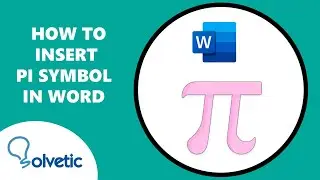
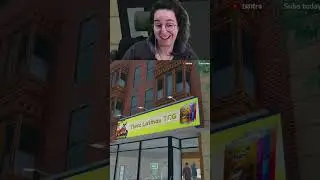

![CORRUPTION TIME [0.6.0] [Incutia] باللغة العربية PT ESPAÑOL ANDROID Y PC](https://images.mixrolikus.cc/video/fgo4c0crog0)



